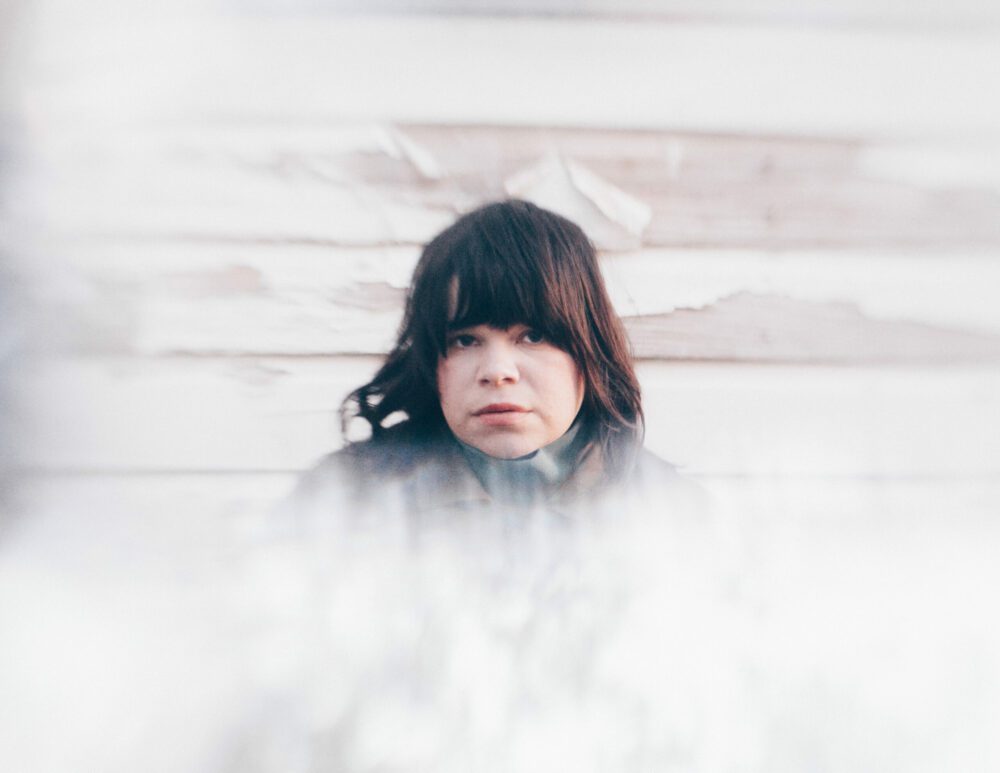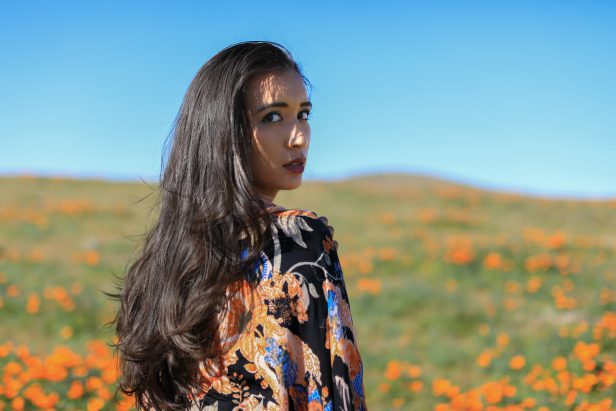

In 2020, Choctaw singer-songwriter Samantha Crain released A Small Death, a lush, indie folk album about surviving trauma and chronic pain. That album found both critical acclaim and a huge base of fans who fell in love with Crain’s elegant paean to survival. Now, the four-song I Guess We Live Here Now (out April 9, 2021) presents, as she says, an epilogue to that album, a glimpse into how reclaiming her power is shaping her life.
“Coming out of that really hard time that A Small Death catalogued, this was a sigh of relief. These songs really are, more than anything I’ve written before, about the agency and instrumentality we have over ourselves in big decisions and on a daily basis,” Crain says by phone from her Oklahoma home. A Small Death and I Guess We Live Here Now are just the latest releases from Crain, who’s steadily released music since 2007, picking up two Native American Music Awards and touring with the likes of The Mountain Goats, Neutral Milk Hotel, and Josh Ritter along the way.
But after three car accidents in a single month in 2017, Crain was unsure she’d make music again. Losing use of her hands, she was bedridden for a year. During that time, she excavated years of traumas, delving into past relationships and working through wounds, a process that led to A Small Death. That album centers around acoustic guitar and, primarily, Crain’s beguiling voice. Her vocals are the emotional center of the record, a simultaneous rasp and ache conjuring a hard-won vulnerability. After the album was complete, Crain found she had more to say but wasn’t yet ready for a new project.
“The songs on the EP were written afterwards. I wasn’t in the headspace to move on to a completely different record. I didn’t have a new record in me. I just had these additional thoughts, which were my impressions of myself increasingly at peace with uncertainties and having more agency over my own decisions. I found a lot of undiscovered love for others in my heart,” she says of her road to healing and self-empowerment.
“I learned a lot of tools on that journey and cataloged a lot of little tricks, and I’m still learning survival tricks, as most people do. You learn as you go. You get older and find more confidence,” she says. While the songs on I Guess We Live Here Now are built of the same sonic elements as A Small Death, there’s a palpable sense of freedom to the new songs. Crain’s vocals soar higher and the melodies are more playful, even when she sings (on “Malachi, Goodbye”) about ending a toxic relationship.
The EP opens with “Bloomsday,” its title referring to the annual James Joyce-inspired celebrations on June 16. If ever a song evoked a summer day and an open heart, this is it. Choosing this song as the first track sets the tone. “I don’t think you can hear a song like ‘Bloomsday’ and think I didn’t make it through okay. It’s literally the most uplifting, hopeful song I’ve ever written. That speaks for itself,” the singer-songwriter says.
She can’t explain exactly how she found her agency. As she says, “It’s hard to pinpoint. It’s like baking a cake where you know there are a lot of ingredients put in but you’re not sure of the science behind why it makes the cake.” She has drawn a lot of strength from the writings and music of Poet Laureate and Native artist Joy Harjo. “Even though we’re 35 years apart, there are a lot of similarities in our stories. Her work as a poet, playwright, musician – she has made me feel less alone, less defeated in difficult times,” Crain explains.
“I release you, my beautiful and terrible/fear. I released you. You were my beloved/and hated twin, but now, I don’t know you/as myself. I release you, my beautiful and terrible/fear. I release you,” Joy Harjo writes in “I Give You Back.” In lines like these, we see Crain’s kindred connection with the poet, their simpatico ability to be poignantly unflinching in dark times.
While Crain needed to survive those dark times in order to write these songs, I Guess We Live Here Now stands alone as well. From the summer breeze of “Bloomsday” to the gentle sway of “There Is No Mail Today” to the drum-and-flute based “Malachi, Goodbye” to the lilting, plucked strings of “Two Sitting Ducks,” this EP is repeat-ready, whether or not listeners have heard A Small Death. It continues Crain’s story, but the story is far from over.
“Everything I make is an epilogue and a prologue,” the singer-songwriter says. As her favorite poet Joy Harjo puts it in “There Is a Map,” “Rivers are the old roads, as are songs, to traverse memory./I emerged from the story, dripping with the waters of memory.” On A Small Death, Samantha Crain mined her memory with songs, wounds becoming roads to take her out of her trauma. I Guess We Live Here Now takes listeners a few more miles down the road to find Crain still making melodic, plush folk music centered around her unmistakable voice. Only now, she’s saying, “Give me something, Bloomsday’s coming, open up the doors and have a goddamn beer.”
Follow Samantha Crain on Facebook and Instagram for ongoing updates.


